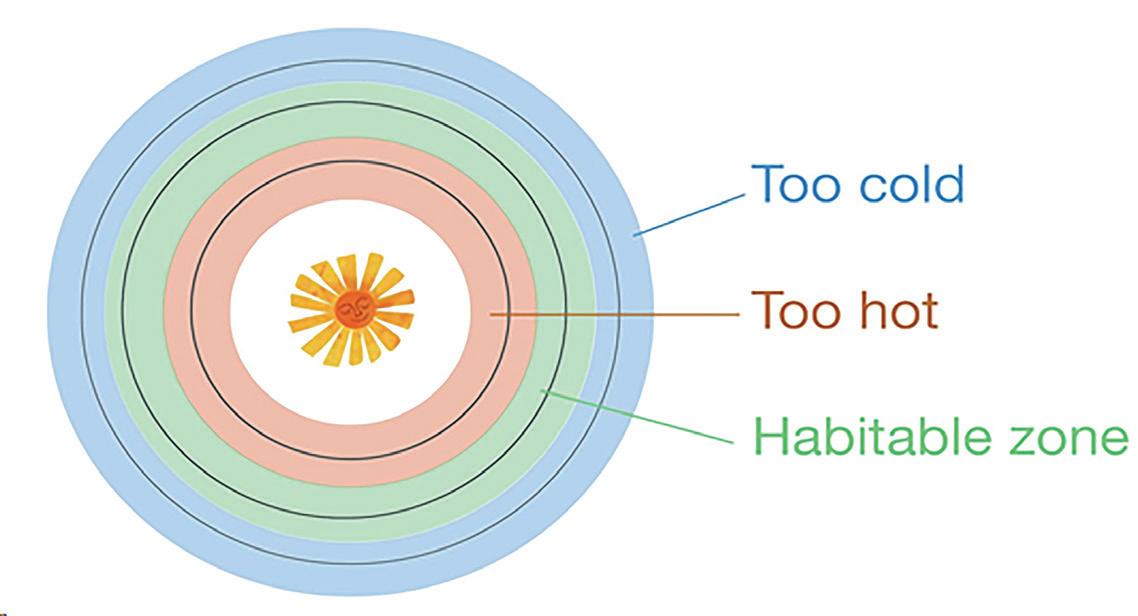
3 minute read
Carden Cappi explains how binary stars could hold the key for finding the next Earth
by Exeposé
HE existence of binary star systems and even systems with three stars is nothing new to the world of astronomy. There have even been observations of systems with up to six stars. Their discovery goes back to Giovanni Battista Riccioli, who discovered a binary star system in the 1650s, and more have been discovered throughout the centuries since then. However, those star systems only rose to real prominence in the collective mind through Star Wars, and theiconic shot of Luke Skywalker staring at the sinking pair of suns, even though by that time planets had not been discovered in star systems like this.
E
Advertisement
By 2019, 143 planets have been discovered in almost 100 binary star systems. However, up until recently, none of those planets had been considered to be habitable, mainly due to the gravitational interactions between planets and stars and the risk of planets being evicted from the system. But thanks to computer technology, scientists have been able to run simulations for the orbit of planets in those binary systems and concluded that most can keep their orbits stable for at least one billion years, meaning they could remain in the habitable zone with temperatures that allow the development of life. And even if fluctuations occurred and the planet ended up outside the zone for some time, astrobiologists are certain that an atmosphere and oceans would balance those, allowing life to continue and develop.
While there has been no actual discovery of habitable planets in binary star systems, computer simulations have helped expand the human imagination and can aid scientists to look for habitable planets due to their ability to create long-term predictions and run simulations instead of relying on observations and calculations. Through technology and the potential of a more directed and focused search for planets, the prospect of finding habitable planets has just increased massively. And who knows, maybe there is some alien life out there, staring at two suns.
The James Webb Space Telescope uncovers new exoplanets
Almudena Visser Velez blasts into the new world of exoplanets and what they really mean for humanity
First observed in the 1990s, over 5000 exoplanets have been found by astronomers to date. Given their abundance, it is not en- tirely far-fetched to
XOPLANETS, planets orbiting stars other than our own Sun, are experiencing a revolution in modern astronomy thanks to the recent James Webb Space Telescope (JWST). They come in a huge variety of types, from giant gas planets orbiting close to their star to small icy rocks orbiting from afar.there is another planet somewhere in the universe capable of sustaining life. The requirement for an Earth-like planet would be one that can sustain liquid water. The satisfaction of this condition is determined by a variety of factors, perhaps the most important of which is distance from the host star; too close and the planet would be so hot that any water would evaporate, too far and the cold temperatures would cause any water to freeze. The range of orbit distances in which this condition can be met is called the habitable zone, as sketched by the author below. Furthermore, the atmosphere would need to be sufficiently thin for some of the star’s light to enter without being blocked so that life can be sustained, but thick enough to shield the surface from excessive radiation that would obliterate any lifeforms. This is much like Earth’s ozone layer, which protects us from the Sun’s harmful ultraviolet radiation. The planet’s size matters too, as it would need sufficiently strong gravity to keep the atmosphere nearby without its constituent molecules drifting away.

Despite all these strict conditions, the sheer number of exoplanets being discovered means one such Earth twin could nevertheless be found. Indeed, astronomers in the NASA/ESA/CSA collaboration recently found a promising potential candidate using the JWST. The exoplanet LHS 475b, a modest 41 light years away, is of almost identical size to Earth, with a diameter 99 per cent of our own planet. The similarities continue; this exoplanet is also made of rock, and it could host an atmosphere (of carbon dioxide rather than nitrogen and oxygen) and further analysis with definite results is expected later this year. There are some differences as the planet is somewhat hotter than ours at a few hundred degrees Celsius, and orbits its star in a mere 48 hours, with its orbit smaller than that of Mercury around the Sun. However, the host star is around half the temperature of the Sun so the exoplanet can be much closer than it could in our solar system without being scorched.
A rather different exoplanet WASP39 b, of similar size and composition to a hotter version of Saturn (big, puffy, and gaseous), is the first exoplanet with a sulfur dioxide atmosphere to have been detected. While this is quite differ- ent from Earth’s composition, it has excited astronomers as its atmosphere was likely made by chemical reactions similar to those responsible for Earth’s ozone layer. The JWST also observed sodium, potassium and, perhaps most excitingly, water vapor, in this planet’s atmosphere. With the plethora of data currently pouring in from the JWST, many more exoplanet discoveries seem inevitable, and the quest for an exo–Earth continues.










